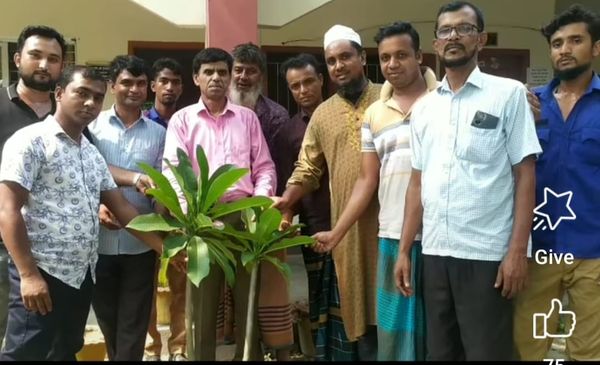-
Union related
Union introduction
Geographical and economic
Miscellaneous
-
Union Council
Union Parishad
Activities of Union Council
Village adalat
Important Information
-
Government office
Agriculture
Land
Health Services
-
Other institutions
Educational institutions
Religious Organizations
Organizations
- Projects
-
Different lists
Beneficiary list
Other lists
-
Services
UDC
National E-Service
-
Gallery
Photo gallery
Video Gallery

Functions of Union Parishad: -
* The functions of the Union Parishad are mainly divided into 5 parts such as: -
1. Municipal office 2. Revenue office and administration 3. Police and security 4. Development and poverty alleviation.
5. Judgment etc.
Mandatory Functions of Union Parishad: -
1. To maintain law and order and to co-operate with the administration in this regard.
2. To take various steps to curb crime, discipline and smuggling.
3. Managers of agriculture, tree planting, fisheries and animal husbandry, health, cottage industries, irrigation communication etc.
4. Expansion of family planning activities.
5. To develop local resources and ensure their use.
. Proper preservation of public property, roads, bridges, culverts, canal telephones, electricity etc.
. To review and produce the development activities of other organizations at the union level
6. Recommendations in this regard to the Deputy Director of Upazila Executive Officer, Local Government and Deputy Commissioner.
To do.
8. To encourage people to use hygienic toilets.
9. To register birth-death, blind, beggar, disabled and miserable people.
10. To conduct all types of census.
* Optional functions of Union Parishad-
1. Arrangement and maintenance of highways and highways.
2. Maintenance of public places, open spaces, gardens and playgrounds.
* Optional functions of Union Parishad-
1. Arrangement and maintenance of highways and highways.
2. Arrangement and maintenance of government premises, open spaces, parks and playgrounds.
3. Lighting of highways and government places.
4. Planting and conservation of trees in general and planting and preservation of trees especially on highways, highways and government places.
5. Maintenance and management of cemeteries and shrines, public meeting places and other public property.
. Accommodation and storage of tourists.
. Regulation of highways and public places and prevention of unauthorized entry.
. Take the people's path to the designated place and control it.
9. To take measures for the cleanliness of the union, rivers, forests, etc., as well as the provision of hygienic measures.
10. Collection of dung and street litter. Ensuring removal and management.
11. Controlling criminal and dangerous measures.
12. Removal and control of dead animals.
13. Controlling animal slaughter.
14. Controlling brokers and brokers in the union.
15. Controlling dangerous brokers and brokers.
16. Maintenance of wells, water taps, reservoirs, ponds and other water supply works.
16. Measures to prevent contamination of drinking water.
16. Prohibit the use of water from wells, water or other places of supply that are suspected to be harmful to public health.
19. Baths, laundry or other wells, ponds or other water supply reservoirs reserved for drinking water.
Prohibit or control animals.
20 Prohibition of planting sorghum, jute or other in ponds or other places near water supply.
21. Listing for sale of livestock or other animals.
22. Organizing fairs or exhibitions.
23. Public celebrations.
24. Help widows, orphans, the poor.
25. Improving the game dust.
26. Arranging barati food production.
26. Environmental management work.
26. Arrangement of control and maintenance of cattle sheds.
29. Arrangement of primary care center.
30 Arrangement of astronomical library.
31. Development assistance under the direction of the Deputy Commissioner.
32. Engaged in the work of the Union Council. Likely to co-operate with other organizations.
33. Necessary arrangements are made for the convenience and comfort of the residents or visitors of the Union.
34. Children's Social Development Cooperative Movement Encouraging the development of the agrarian industry.
35. Management of fires, hailstorms, floods, earthquakes or other natural disasters.
36. Prohibition or regulation of construction of bricks, earthenware or other kilns in residential areas.
36. Prohibition of excavation of stones or other objects by digging soil in residential areas.
36. Prohibition of skin coloring in residential areas.
Planning and Implementation: Cabinet Division, A2I, BCC, DoICT and BASIS













